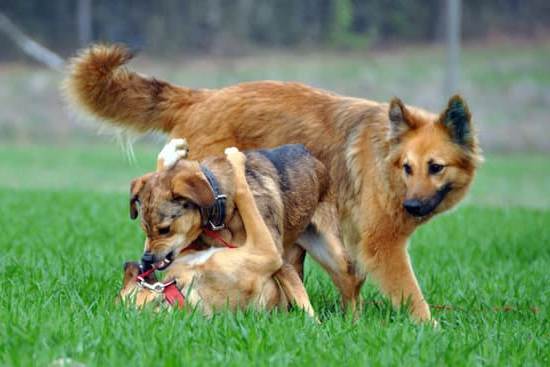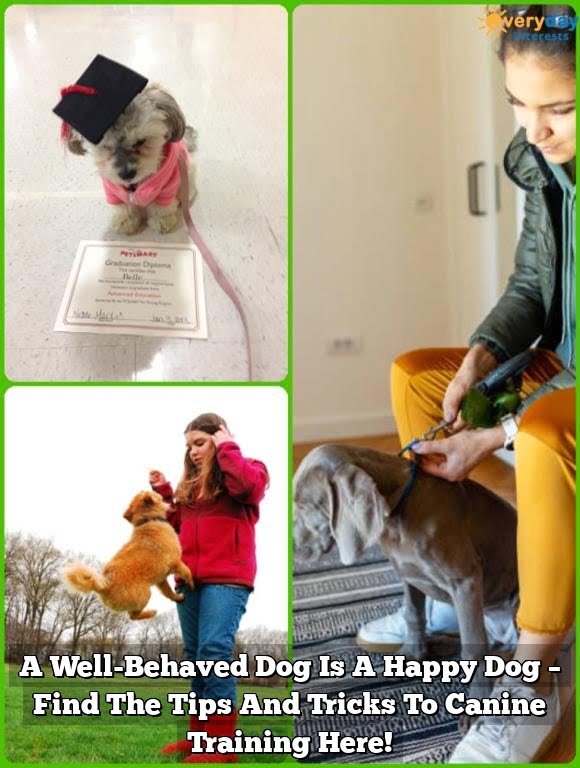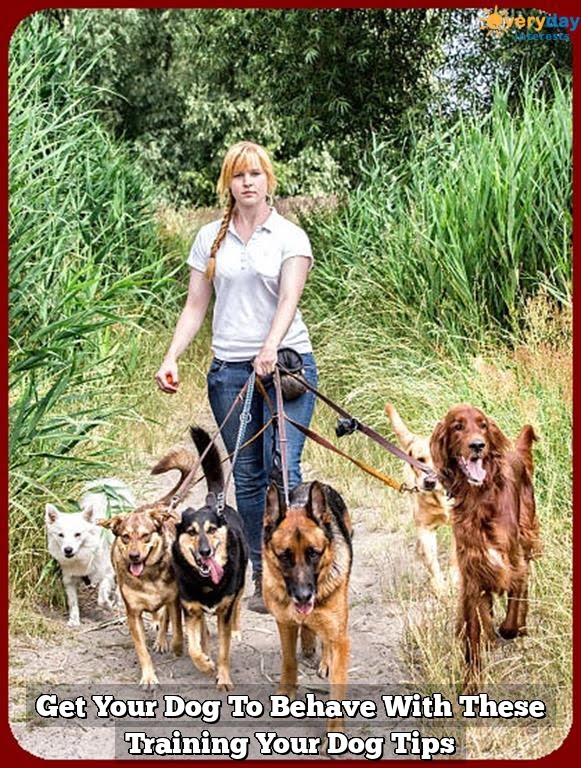Are you struggling with training your furry friend? In this article, we will explore essential dog training tips to help you establish a well-behaved companion. Understanding the importance of dog training and the benefits of a well-behaved dog are crucial for a harmonious relationship with your pet. From setting the foundation to problem-solving, we will cover all aspects of effective dog training.
Setting the foundation for your dog is essential in establishing rules and boundaries. Positive reinforcement, such as using treats and praise, can motivate and encourage good behavior in your pet. Consistency is key in maintaining regular training sessions and routines to ensure progress. Communicating effectively with your dog through body language and voice commands is also fundamental in successful training.
As we delve deeper into this topic, we will address common behavioral issues such as jumping, barking, leash pulling, and provide solutions on how to overcome them. Additionally, we will discuss the importance of socialization for your dog, including exposure to different environments, people, and animals. Lastly, advanced training techniques will be explored to challenge and stimulate your furry friend’s mind. Let’s begin our journey into understanding the world of dog training together.
Setting the Foundation
Setting a strong foundation is crucial when it comes to dog training. This involves establishing rules and boundaries for your dog right from the start. Consistency is key, so everyone in the household should be on the same page when it comes to expectations and rules for the dog. This means deciding where your dog will sleep, eat, and play, as well as setting limits on furniture access and behavior around visitors.
One of the most important aspects of setting the foundation for your dog is to establish yourself as the pack leader. Dogs are pack animals by nature, and they thrive in an environment with clear leadership. By assuming this role, you can effectively guide your dog’s behavior and build trust and respect in your relationship.
To set the foundation for your dog, consider using positive reinforcement techniques to reward good behavior. This can include treats, praise, or even playtime as a way to motivate and encourage your dog. Consistency in enforcing rules and boundaries is essential to ensure that your dog understands what is expected of them.
It’s also important to remember that every dog is unique, so training methods may need to be adjusted based on their individual personality and temperament. By following these guidelines and catering to your dog’s specific needs, you can establish a strong foundation for successful training while deepening the bond between you and your furry companion.
| Training Technique | Description |
|---|---|
| Positive Reinforcement | Rewarding good behavior with treats, praise, or playtime |
| Pack Leader Role | Establishing yourself as the leader of the pack to guide behavior |
| Consistency | Enforcing rules and boundaries consistently for clear expectations |
Positive Reinforcement
When it comes to dog training, positive reinforcement is an effective and humane method to motivate and encourage good behavior in your furry friend. Utilizing treats and praise, positive reinforcement can create a strong bond between you and your dog while fostering a happy, well-behaved pet.
Using treats as a reward for good behavior is one of the most popular dog training tips. When implementing this technique, it’s important to choose treats that are both enticing and healthy for your dog. Small, bite-sized treats are ideal for quick rewards during training sessions. Along with treats, verbal praise such as “good boy” or “good girl” helps reinforce the positive behavior you want to see from your dog.
In addition to using treats and praise, it’s important to be mindful of timing when practicing positive reinforcement. Your dog should receive the treat or praise immediately following the desired behavior in order to effectively associate the reward with the action.
Consistency in using positive reinforcement will help your dog understand what behaviors are desirable and reinforce their willingness to repeat them in the future. Overall, incorporating positive reinforcement into your dog training routine can lead to a happy and well-behaved pet.
Consistency Is Key
Consistency is crucial in dog training. Dogs thrive on routine, and regular training sessions help reinforce good behavior and establish a strong bond between you and your furry companion. Here are some tips to help you maintain consistency in your dog training efforts:
- Set a schedule for training sessions: Regular training sessions, even if they’re just 10-15 minutes a day, can make a big difference in your dog’s behavior. Consistency in the timing of these sessions will help your dog understand what is expected of them and when.
- Use the same commands and cues: Consistency in the language you use to communicate with your dog is important. Make sure that everyone in your household uses the same commands and cues to avoid confusion for your pet.
- Reward good behavior consistently: Whether it’s using treats, praise, or toys, be consistent in rewarding your dog for good behavior. This positive reinforcement will motivate them to repeat that behavior in the future.
In addition to regular training sessions, maintaining a routine in other aspects of your dog’s life is also important. From feeding times to walks and playtime, having a predictable routine can help reduce stress and anxiety for your pet. Consistency creates a sense of security for dogs, making them feel safe and confident in their environment.
By incorporating these consistency tips into your dog training regimen, you can set your pet up for success while strengthening the bond between you. Remember, patience, persistence, and love are essential elements to successful dog training.
Communication
Effective communication is essential in dog training, as it allows you to convey your expectations and commands to your furry friend. When using body language, it’s important to be aware of your posture and facial expressions. For example, standing tall with open body language can convey confidence and assertiveness, while crouching down may indicate a more playful interaction. Additionally, maintaining eye contact with your dog can help establish a connection and show that you are focused on them.
Voice commands are also crucial when communicating with your dog. It’s important to use clear, consistent verbal cues to convey what you want your dog to do. For example, using the command “sit” in a firm but calm tone when teaching your dog to sit can help them understand what is expected. Consistency in the tone and delivery of voice commands can prevent confusion and reinforce good behavior.
In addition to body language and voice commands, understanding how your dog communicates is equally important. Paying attention to their body language and vocalizations can provide insight into their feelings and intentions. This awareness allows you to adjust your own communication style accordingly, building a strong bond based on mutual understanding.
| Body Language | Voice Commands |
|---|---|
| Posture | Clear verbal cues |
| Facial expressions | Consistent tone |
| Eye contact | Firm but calm delivery |
Problem-Solving
When it comes to dog training, one of the most important aspects is addressing common behavioral issues that can arise with your furry friend. Jumping, barking, and leash pulling are some of the most common issues that dog owners face, but with the right techniques and consistency, these behaviors can be effectively managed.
Jumping
Jumping is a natural behavior for dogs as it is their way of greeting people and showing excitement. However, it can become problematic when they jump on guests or children. To address this issue, it’s essential to ignore the jumping behavior and only give attention when all four paws are on the ground. You can also teach your dog an alternative behavior such as sitting when greeting people.
Barking
Excessive barking can be a nuisance for both you and your neighbors. To tackle this issue, it’s important to identify the trigger for the barking and then work on desensitizing your dog to it. Using positive reinforcement techniques such as rewarding quiet behavior and teaching a “quiet” command can also be effective in reducing excessive barking.
Leash Pulling
Walking a dog that constantly pulls on the leash can be frustrating. Using positive reinforcement techniques such as rewarding your dog for walking politely on a loose leash can help to address this issue. Additionally, using a front-clip harness or head halter can provide better control over your dog’s pulling behavior.
By implementing these dog training tips in handling common behavioral issues, dog owners will see improvement in their pet’s conduct over time through consistent practice and patience.
Socialization
Socializing your dog is a crucial aspect of their overall training and development. It involves exposing your furry friend to various environments, people, and animals in order to help them become well-adjusted and confident pets. This process helps them understand the world around them, develop good social skills, and reduce fear or aggression towards unfamiliar stimuli.
The Benefits of Socialization
Socialization is essential for a well-behaved, happy dog. It helps prevent behavioral problems such as fear, anxiety, and aggression towards other dogs or humans. It also fosters confidence in your pet, making them more adaptable to new situations and preventing issues such as separation anxiety or destructive behavior at home. Additionally, a well-socialized dog is easier to manage in public spaces and is less likely to act out in stressful situations.
How to Socialize Your Dog
Start by introducing your dog to different environments gradually. Take them on walks in busy areas with lots of foot traffic so they can get used to different sounds and sights. Invite friends over or take your dog to a dog park where they can interact with other dogs and people in a controlled environment.
Additionally, expose them to various animals if possible. Always make these experiences positive by offering treats and praise when they show calm behavior. Remember that every dog is different-some may take longer than others to feel comfortable in new settings, so be patient and supportive throughout the process.
Remember that successful socialization requires time, consistency, patience, and love for your furry friend. By following these tips for socializing your pup, you’ll be setting the stage for a happy and well-adjusted companion that will bring joy to you and those around them.
Advanced Training Techniques
Once your dog has mastered the basic commands like sit, stay, and come, it’s time to introduce some advanced training techniques to challenge their mind and keep them mentally stimulated. Dogs are intelligent creatures and need mental stimulation to stay engaged and happy. Teaching your dog advanced commands and tricks not only provides great mental exercise but also strengthens the bond between you and your furry friend.
One advanced command that you can start with is “heel,” which teaches your dog to walk beside you on a loose leash. This command requires patience, consistency, and plenty of practice. Another useful command is “leave it,” which can be a life-saving command in dangerous situations.
It teaches your dog to ignore distractions and potential hazards. Additionally, tricks like rolling over, playing dead, or fetching specific items by name can provide mental stimulation and entertainment for both you and your dog.
To effectively teach advanced commands and tricks, it’s essential to use positive reinforcement such as treats, praise, and toys. Positive reinforcement encourages your dog to perform the desired behavior while strengthening the bond between you. Remember to always use patience and consistency when introducing new commands or tricks. It’s important not to rush the process or become frustrated if your dog doesn’t catch on right away.
In addition to teaching advanced commands, consider enrolling your dog in an agility or obedience class where they can learn even more complex skills while socializing with other dogs. These classes provide structured training sessions that challenge your dog’s mind while also offering opportunities for them to interact with other dogs in a controlled environment. Consistent practice at home combined with professional guidance in a class setting can help reinforce good behavior and sharpen their skills even further.
Conclusion
In conclusion, successful dog training requires a combination of patience, persistence, and love. It is important to understand that training a dog takes time and effort, and it cannot be rushed. By following the provided dog training tips and techniques, you can create a strong foundation for a well-behaved and obedient dog.
Remember that consistency is key in dog training. Regular training sessions and maintaining a routine will help reinforce good behavior and prevent any regression. Positive reinforcement, such as using treats and praise, is also crucial in motivating your dog to learn new commands and tricks. Additionally, understanding how to effectively communicate with your dog through body language and voice commands will strengthen the bond between you and your pet.
Furthermore, socialization is an essential aspect of dog training. Exposing your dog to different environments, people, and animals will help them become more adaptable and well-rounded. It is also important to address any behavioral issues by implementing problem-solving techniques. Lastly, always approach dog training with patience, persistence, and love. With time and dedication, you can achieve great success in training your furry companion.
Frequently Asked Questions
What Are the 5 Golden Rules of Dog Training?
The 5 golden rules of dog training include consistency, patience, positive reinforcement, proper timing, and setting realistic expectations. Consistency in commands and rewards helps the dog understand what is expected of them.
What Are the 7 Most Important Dog Commands?
The 7 most important dog commands are sit, stay, come, down, heel, no, and leave it. These commands cover basic obedience and safety for the dog and those around them. Consistent training is key to mastering these commands.
How Do You Train a Dog Effectively?
Training a dog effectively requires clear communication, positive reinforcement, and patience. Using rewards like treats or praise can motivate the dog to learn new behaviors. It’s also important to be consistent in training and to practice regularly in different environments to ensure the dog’s obedience is reliable.

Welcome to the blog! I am a professional dog trainer and have been working with dogs for many years. In this blog, I will be discussing various topics related to dog training, including tips, tricks, and advice. I hope you find this information helpful and informative. Thanks for reading!





